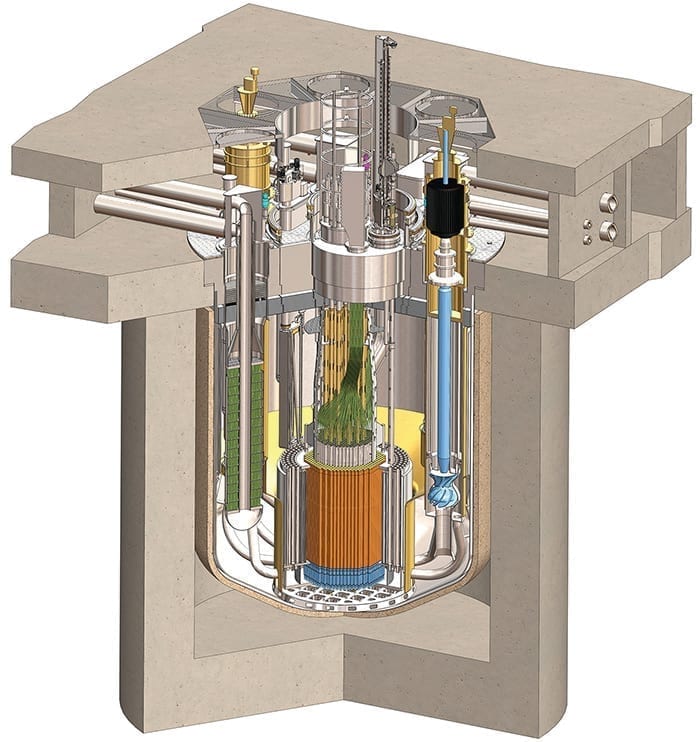A Hopeful Narrative for the Nuclear Industry
The post A Hopeful Narrative for the Nuclear Industry appeared first on POWER Magazine.

Although there is only one nuclear power plant construction project in progress today in the U.S., that doesn't mean the nuclear industry has gone dormant. A lot of research and development are ongoing, and the federal government is putting millions of dollars behind some of the efforts.
The Advanced Reactor Demonstration ProgramThe Department of Energy's [DOE's] Advanced Reactor Demonstration Program [ARDP] is a real gamechanger for the industry," Marc Nichol, senior director of new reactors with the Nuclear Energy Institute (NEI), a policy organization of the nuclear technologies industry, said as a recent guest on The POWER Podcast. It offers an opportunity for DOE to directly cost-share with different companies developing technologies to help accelerate technology development."
In October, the DOE awarded TerraPower and X-energy $80 million each in initial funding under the ARDP to build two advanced nuclear reactors that can be operational within seven years. The DOE plans to invest a total of $3.2 billion over the next seven years, with industry partners providing matching funds.
For its part, TerraPower plans to demonstrate its Natrium reactor, a sodium-cooled fast reactor that supposedly leverages decades of development and design work undertaken by TerraPower and its partner GE Hitachi Nuclear Energy. The high-operating temperature of the Natrium reactor, coupled with thermal energy storage, will reportedly allow the plant to provide flexible electricity output that complements variable renewable generation such as wind and solar.
X-energy is expected to deliver a commercial four-unit nuclear power plant based on its Xe-100 reactor design. The Xe-100 is a high-temperature gas-cooled reactor that is said to be ideally suited to provide flexible electricity output as well as process heat for a wide range of industrial heat applications, such as desalination and hydrogen production.
There's a lot of new and innovative things that these types of reactors can do," Nichol said, referring to the ARDP-funded designs.
MicroreactorsAmong other designs that Nichol spoke of were microreactors (units with power output ranging from 1 MW to 10 MW). The best way I can describe it is a microreactor would be able to fit on the back of a flatbed semi-truck. The building itself would be about the size of an average home. The size of the site itself would be about the size of a suburban lot. And so, that gives a visual perspective of how small these things are-you can put them just about anywhere," he said.
Commercial interest for microreactors is coming largely from remote areas, such as in Alaska and northern Canada. Nichol said microreactors can operate 24/7 for years at a time without refueling, and at prices cheaper than what diesel generators can do today.
Mobile reactor designs are also being developed. Although there is little interest for mobile reactors from a commercial perspective, the Department of Defense (DOD) sees a use for these types of units. In March, the DOD awarded three teams-BWX Technologies Inc., Westinghouse Government Services, and X-energy-contracts to each begin design work on a mobile nuclear reactor prototype under a Strategic Capabilities Office initiative called Project Pele.
That design effort should conclude sometime next year, in 2021, maybe early 2022," Nichol said. From there, they'll move into the manufacturing and operations to test that."
Storing Used Nuclear FuelNichol suggested the nuclear industry has a good story to tell about used fuel. If I think about all of the things you need to have in place in order to be able to deal with the waste stream of any technology, the first thing you need to do is you need to have the technology to be able to do that safely, and we have that," he said. We've been developing technology for used fuel management for decades. We've demonstrated we can store it for long periods of time safely, we can transport it safely, we've developed the technology to dispose of it safely. So, we've checked that box."
The next thing Nichol said was needed is the ability to pay for it. And we checked that box because we've been saving for the cost of used fuel disposal since the day we began putting electrons on the grid," he said. We collect that money and put it into a trust fund as we go." According to Nichol, the government nuclear waste fund currently has more than $30 billion in it, and it continues to grow.
After that, a place to put the used fuel is needed, and Nichol said the U.S. has that too. The Nuclear Waste Policy Act of 1982, amended in 1987, designated Yucca Mountain as the location. The one thing we don't have-we don't have Congress continuing to fund DOE's program to deal with used fuel," said Nichol, noting that the problem is a political issue. He sounded hopeful that leaders in Washington would eventually be able to resolve their differences and move forward with the DOE's program for used fuel management. In the grand scheme of things, it's a small issue to overcome," he said.
To learn more about advanced reactors and other nuclear power developments, listen to the full interview on The POWER Podcast. Follow the links below to subscribe via your favorite platform or click on the SoundCloud player to listen now:
The POWER Podcast 71. A Hopeful Narrative for the Nuclear IndustryFor more power podcasts, visit The POWER Podcast archives.
-Aaron Larson is POWER's executive editor (@AaronL_Power, @POWERmagazine).
The post A Hopeful Narrative for the Nuclear Industry appeared first on POWER Magazine.